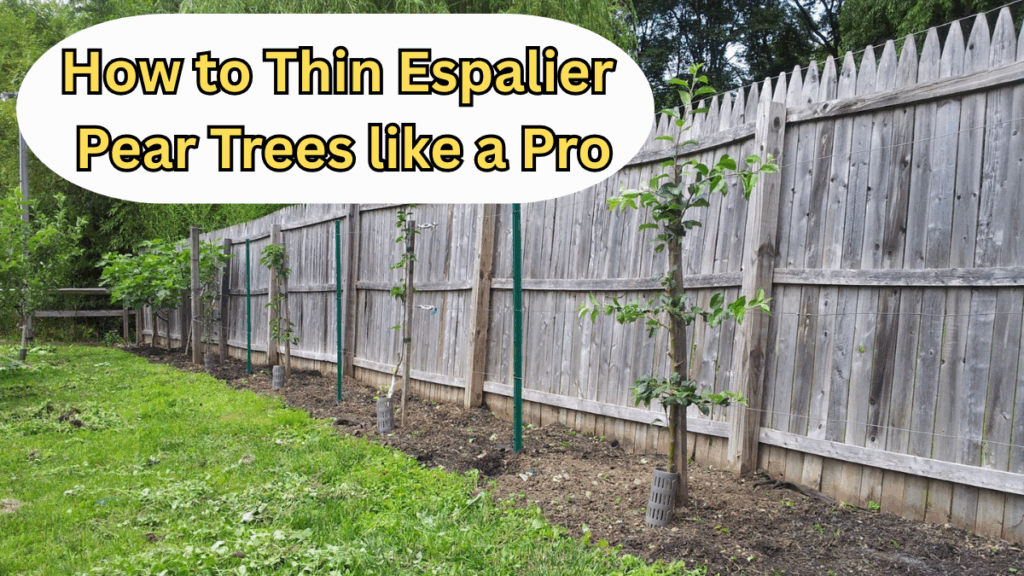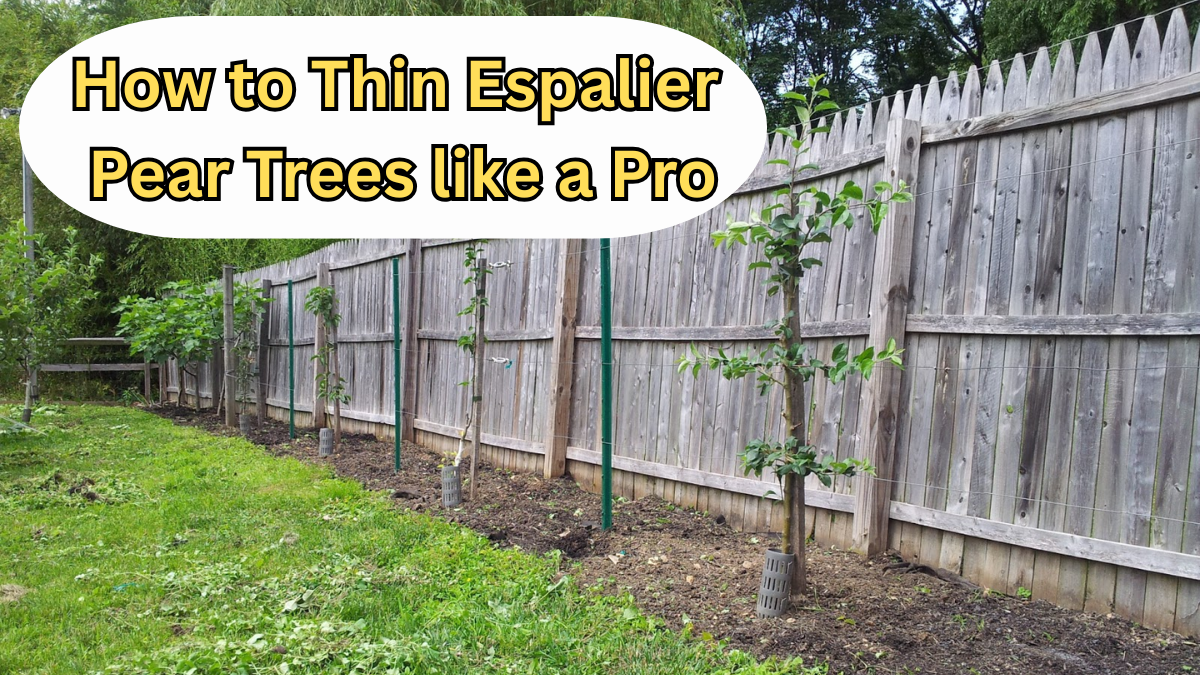Espalier pear trees are a beautiful blend of art and agriculture — their neatly trained branches and lush foliage make any garden look elegant. But beyond aesthetics, learning how to thin espalier pears properly is essential for healthy growth and bountiful harvests.
Here’s a complete, easy-to-follow guide to help you thin your espalier pear trees like a seasoned gardener.

Why Thinning Espalier Pear Trees Matters
When your espalier pear tree is overloaded with fruit, it can stress the branches and reduce the size and sweetness of the pears. Thinning helps by:
- Allowing sunlight and air to reach all parts of the tree
- Encouraging larger, juicier fruits
- Preventing branches from breaking due to excessive weight
- Reducing the spread of pests and diseases
Regular fruit thinning ensures that each pear receives enough nutrients to develop properly — especially varieties like the Bartlett pear, which tends to overproduce.
When to Thin Espalier Pear Trees
Timing is everything. The best time to thin espalier pears is when fruits are about the size of a marble or small walnut — usually in late spring or early summer.
If you wait too long, the tree will have already invested energy into developing the excess fruit, which can reduce overall quality.
Step-by-Step Guide to Thinning Espalier Pears
Follow these simple steps to achieve the perfect balance between beauty and productivity:
| Step | Action | Purpose |
|---|---|---|
| 1. Inspect the Tree | Look for clusters of 3–5 small fruits. | Helps identify overcrowded spots. |
| 2. Choose the Healthiest Fruits | Select pears that are firm, well-shaped, and blemish-free. | Encourages strong, market-quality pears. |
| 3. Remove Excess Fruits | Use pruning shears or gently twist off smaller or damaged pears. | Reduces nutrient competition. |
| 4. Maintain Spacing | Leave 4–6 inches between fruits along the branch. | Allows pears to grow to full size. |
| 5. Clean Up the Area | Remove all fallen or thinned pears from around the tree. | Prevents pest attraction and disease. |
A balanced fruit thinning process ensures that each Bartlett pear receives ample nutrition and sunlight for ideal ripening.
Pro Tips for Thinning Espalier Pears
To make the process smoother, keep these expert insights in mind:
- Use sterilized tools: Always disinfect your pruning shears to prevent disease spread
- Thin gradually: If you’re new to espalier pruning, start by removing fewer fruits and observe the results
- Watch for leaf coverage: Ensure that sunlight reaches all parts of the branch
- Feed the tree after thinning: Apply a balanced fertilizer to support growth
These tips will help you keep your espalier pear trees healthy and productive year after year.
Caring for Bartlett Pears After Thinning
Once you’ve thinned your Bartlett pear trees, proper care is key to maintaining fruit quality:
- Water consistently, especially during dry periods
- Use organic mulch to retain soil moisture
- Prune lightly to maintain the espalier shape
- Protect against pests like pear psylla and codling moths
By following these steps, you’ll be rewarded with sweet, flavorful pears and a stunning espalier display.
FAQs
Q1: How many pears should I leave per spur when thinning espalier pear trees?
A: Ideally, leave one or two of the healthiest fruits per spur, ensuring enough space between each pear.
Q2: Can I thin espalier pears using my hands instead of pruning shears?
A: Yes, you can gently twist off smaller fruits by hand, but pruning shears give you better precision and reduce the risk of damaging the branch.
Q3: What happens if I don’t thin my Bartlett pear tree?
A: Without fruit thinning, your tree might produce smaller, less flavorful fruits and could suffer from branch breakage or disease due to overcrowding.
Q4: How often should I perform thinning on espalier pear trees?
A: Once a year during the growing season is sufficient, but inspect regularly to ensure no excessive fruit clusters remain.
Click here to learn more
